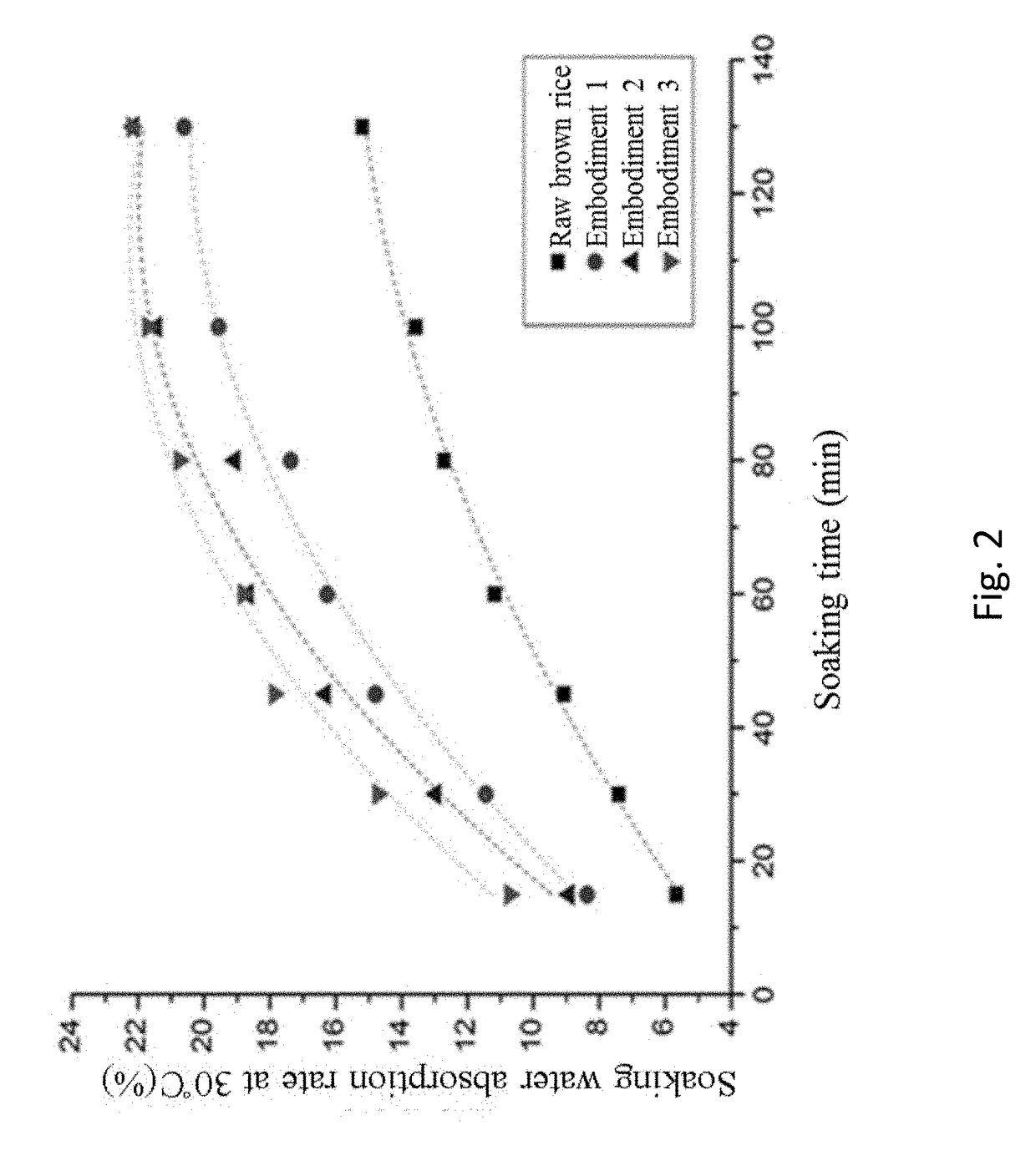Method for Improving the Cooking Quality of Brown Rice by Lactic Acid Bacteria Fermentation
a technology of lactic acid bacteria and brown rice, which is applied in the field of food processing, can solve the problems of affecting the cooking affecting the quality of brown rice, so as to improve the water permeability, shorten the cooking time, and increase the water absorption and starch gelatinization
- Summary
- Abstract
- Description
- Claims
- Application Information
AI Technical Summary
Benefits of technology
Problems solved by technology
Method used
Image
Examples
example 1
[0039]Weigh 1000 g sorted whole grain brown rice; add activated Lactobacillus plantarum liquid at the inoculation rate of 5.0×107 cfu / g; mix evenly and pour the mixture into a fermentation bag with a one-way air outlet valve; add water to make the initial moisture content of the fermentation system at 25%; perform the fermentation at 35° C. for 24 hours. Dry the fermented rice and seal it in a degassed bag.
example 2
[0040]Weigh 1000 g sorted whole grain brown rice; add activated Lactobacillus plantarum liquid at the inoculation rate of 2.0×108 cfu / g; mix evenly and pour the mixture into a fermentation bag with a one-way air outlet valve; add water to make the initial moisture content of the fermentation system at 35%; perform the fermentation at 25° C. for 20 hours. Dry the fermented rice and seal it in a degassed bag.
example 3
[0041]Weigh 1000 g sorted whole grain brown rice; add activated Lactobacillus plantarum liquid at the inoculation rate of 1.0×108 cfu / g; mix evenly and pour the mixture into a fermentation bag with a one-way air outlet valve; add water to make the initial moisture content of the fermentation system at 30%; perform the fermentation at 40° C. for 16 hours. Dry the fermented rice and seal it in a degassed bag.
PUM
 Login to View More
Login to View More Abstract
Description
Claims
Application Information
 Login to View More
Login to View More - R&D
- Intellectual Property
- Life Sciences
- Materials
- Tech Scout
- Unparalleled Data Quality
- Higher Quality Content
- 60% Fewer Hallucinations
Browse by: Latest US Patents, China's latest patents, Technical Efficacy Thesaurus, Application Domain, Technology Topic, Popular Technical Reports.
© 2025 PatSnap. All rights reserved.Legal|Privacy policy|Modern Slavery Act Transparency Statement|Sitemap|About US| Contact US: help@patsnap.com


